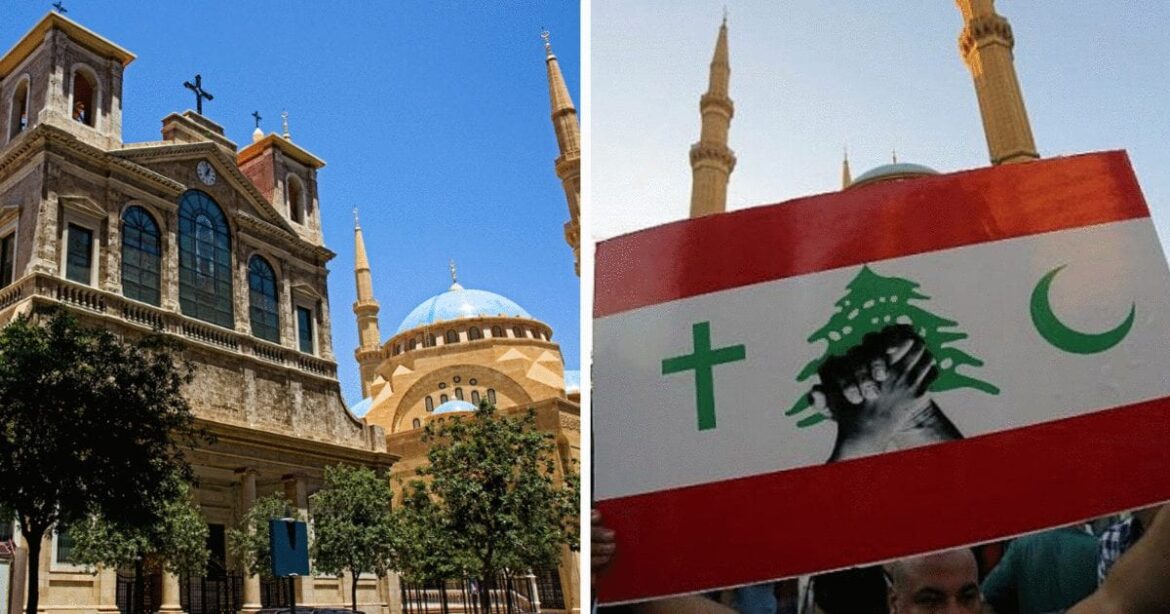Lebanon, a nation that has long stood at the crossroads of cultures, demonstrates the intricate interplay between various religious communities, primarily Christians and Muslims. The historical evolution of this Lebanese identity cannot be diminished to a singular event of conquest or takeover; rather, it is a tapestry woven through centuries of sociopolitical and religious dynamics. This overview seeks to illuminate the timeline and circumstances under which the Muslim presence in Lebanon became pivotal, while reflecting on its impact on the Christian populace and the subsequent coexistence that defines Lebanon today.
To adequately appreciate the Muslim influence in Lebanon, one must explore the historical backdrop preceding what many refer to as the Islamic conquests of the 7th century. Prior to this period, Lebanon was part of the Byzantine Empire, predominantly Christian in its beliefs and governance. The early Christians thrived in this mosaic of faiths, establishing communities, churches, and a rich cultural heritage. However, as the Byzantine Empire began its gradual decline, opportunities emerged for external forces to stake claims over the region.
The advent of Islam in the 7th century brought forth seismic shifts across the Mediterranean, including the region now known as Lebanon. Following the death of the Prophet Muhammad in 632 AD, rapid expansion of Islamic rule commenced. By 635 AD, the Muslim armies had defeated Byzantine forces in noteworthy battles such as the Battle of Yarmouk. The subsequent Islamic conquests allowed for the incorporation of Lebanon into the burgeoning Umayyad Caliphate, which marked the inception of a transformative period for the Christian communities within the region.
During Umayyad rule, a significant demographic shift began to unfold. While Christians were largely permitted to practice their faith—an example of the tolerance prescribed by Islamic tenets—they began to experience socio-political marginalization. The Islamic tax system, implementing a jizya (poll tax) on non-Muslims, further stratified society, positioning Muslims in prevailing roles while Christians found themselves increasingly relegated to lower echelons. This imposed hierarchy sowed the seeds of a gradual cultural and political displacement, catalyzing change in the religious landscape of Lebanon.
As the Caliphate transitioned to the Abbasids in the 8th century, the governing focus shifted—attempting to unify diverse subjects under Islamic doctrine. The divisions between Christians and Muslims deepened, shaping not only personal identities but also community affiliations. In many instances, Christians resorted to alliances with Byzantine remnants in a bid to reclaim influence and sway amidst the growing Islamic dominance.
The arrival of the Crusaders in the late 11th century introduced a new chapter in this historical narrative, often viewed as a Christian reaction against the encroachment of Islam. The Crusaders established short-lived kingdoms, including the Principality of Antioch, which influenced Lebanon’s Christian community, most notably the Maronites. These periods instigated a complex relationship between Christians and Muslims, oscillating between competition and collaboration. The fragmented political entities within Lebanon displayed an evolving resistance against the backdrop of mutual grievances stemming from sectarian differences.
The end of the Crusades did not spell the conclusion of these sectarian dynamics. By the 15th century, the emergence of the Mamluk Sultanate saw a resurgence of Muslim power in Lebanon. The Mamluks, succeeding the Crusaders in authority, embraced a more centralized governance model, often clashing with Christian factions. This period exacerbated religious rivalries, creating a far-reaching impact on social structures and inter-community relations, further entrenching divisions and fostering an environment of mistrust.
If the Mamluks were a period of hostilities, the Ottomans ushered in a more complex, albeit nuanced relationship between the two major faiths beginning in the 16th century. While the Ottoman Empire was predominantly Islamic, it also allowed for a degree of autonomy among its various religious groups, including Christians. The millet system, which established communal governance for different religious communities, provided Christians with certain privileges, including self-administration. At this point in history, Lebanon’s Christians—namely the Maronites—began to gain social and political standing, which in turn incited ambivalence among Muslims.
The dynamics of coexistence reached a peak during the 19th century, when sectarian tensions precipitated a series of uprisings. The 1860 civil strife—often exacerbated by external powers—illustrates the volatile nature of Christian-Muslim relations, as each community sought to assert its dominance amid shifting allegiances. This culminated in the establishment of a delicate power-sharing system within Lebanon, albeit one that remained tethered to sectarian identity.
The colonization by France following World War I further complicated Lebanese identity. France, predominantly a Catholic nation, fostered Christian communities, often to the detriment of Muslim aspirations. Such colonial influences entrenched divisions, setting the stage for ongoing strife between Christian and Muslim factions in the lead-up to Lebanon’s independence in 1943.
The post-independence era has witnessed both notable coexistence and brutal conflicts, most prominently the Lebanese Civil War (1975-1990). The war was largely a culmination of longstanding sectarian tensions fuelled by external influences. The complex interplay of historical grievances, territorial disputes, and foreign interventions continues to resonate within Lebanon’s socio-political landscape today.
In conclusion, the historical narrative of Muslim and Christian relations in Lebanon is not that of absolute takeover but rather a chronicle of gradual transformation within a community that has navigated through centuries of tension and collaboration. As Lebanon stands today, it serves not merely as a geographical entity, but as a testament to the enduring capacity for coexistence among its diverse population. The legacy of faith, deeply embedded in the nation’s identity, continues to shape the ethos of its people who—despite historical challenges—find ways to engage with one another across lines that were once sharply drawn. Understanding these nuances is essential for fostering an inclusive dialogue that honors the complex heritage of this Middle Eastern jewel.



